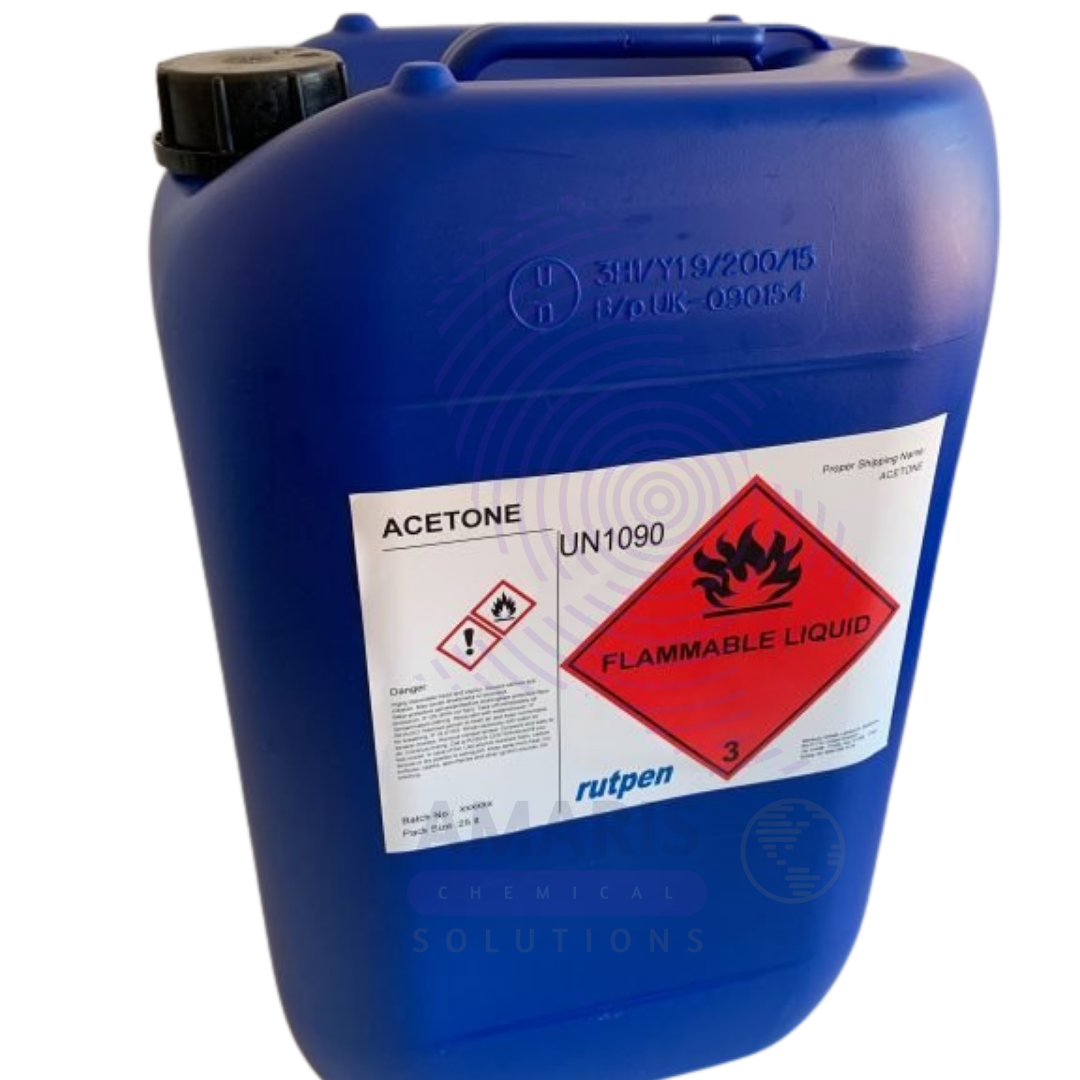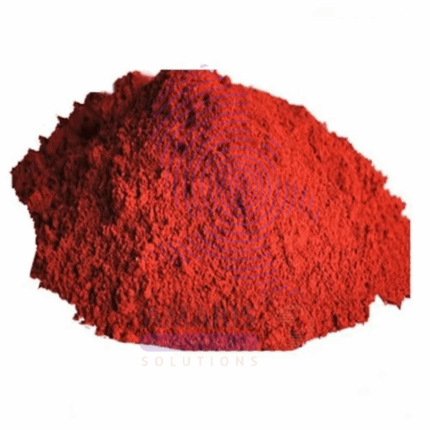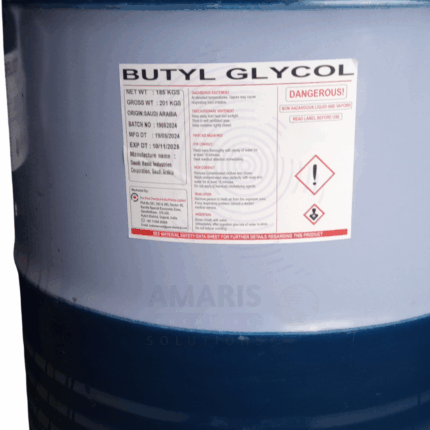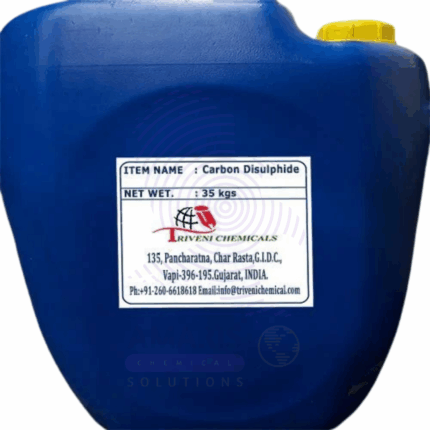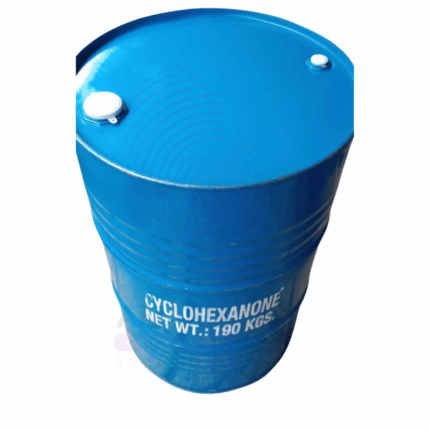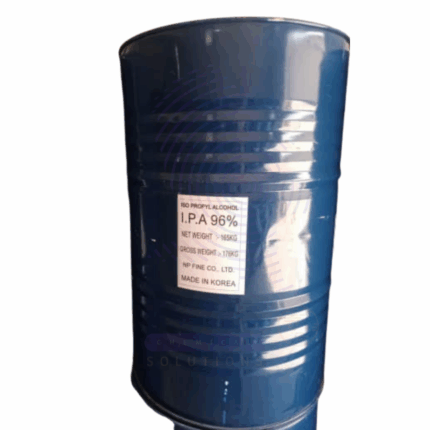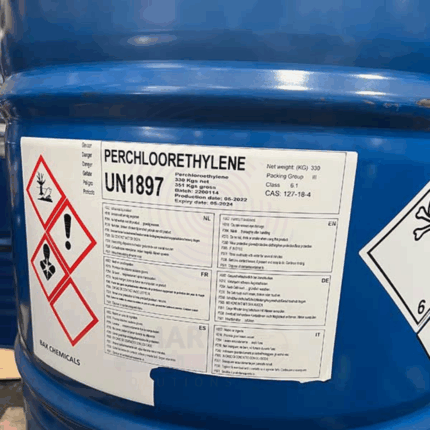Acetone
$ 2.00 Original price was: $ 2.00.$ 1.39Current price is: $ 1.39.
Whatsapp Order
Acetone Extra Pure is a high-purity grade of acetone (≥99.5%) specifically purified to meet stringent quality standards for laboratory and industrial applications. This volatile, colorless solvent is characterized by its rapid evaporation rate, excellent solvency power, and minimal impurity content, making it suitable for sensitive chemical processes and analytical applications
Description
Table of Contents
Toggle
Acetone
Primary Uses
- Industrial & Chemical Solvent
- One of the most widely used polar aprotic solvents in laboratories and industries.
- Effective for dissolving plastics, resins, synthetic fibers, and varnishes.
- Used in paint thinners, nail polish removers, and adhesive cleaners.
- Pharmaceutical & Cosmetic Manufacturing
- Used as a solvent in drug formulations (e.g., antibiotics, steroids).
- Key ingredient in nail polish removers due to its ability to dissolve nitrocellulose.
- Found in skincare products (in controlled amounts for exfoliation).
- Laboratory & Research Applications
- Common cleaning agent for lab glassware due to fast evaporation.
- Used in DNA/RNA extraction and protein precipitation.
- Solvent in HPLC (High-Performance Liquid Chromatography).
- Plastics & Synthetic Materials Production
- Key precursor in manufacturing polycarbonates, epoxy resins, and plexiglass (PMMA).
- Used in producing bisphenol A (BPA), a component of plastics.
- Fuel & Energy Applications
- Added to acetylene cylinders to stabilize the gas for welding.
- Investigated as a biofuel additive for improving combustion efficiency.
Secondary Uses
- Household & Cleaning Products
- Removes superglue, grease, and permanent markers.
- Used in electronics cleaning (circuit boards, contacts).
- Medical & Forensic Uses
- Used in histology labs for tissue dehydration before embedding in paraffin.
- Helps in fingerprint development on porous surfaces.
- Food Industry (Indirect Use)
- Approved as an extraction solvent for spices and hops (though residues must be minimized).
- Textile Industry
- Used in dyeing and degreasing wool.
- 3D Printing & Additive Manufacturing
- Used for smoothing ABS (Acrylonitrile Butadiene Styrene) prints via vapor polishing.
KEY PRODUCT FEATURES
1. Basic Identification Attributes
- Chemical Name (IUPAC): Propan-2-one
- Common/Trade Names:
- Acetone
- Dimethyl ketone
- 2-Propanone
- β-Ketopropane
- CAS Number: 67-64-1
- HS Code: 2914.11.00
- Molecular Formula: C₃H₆O
- Synonyms:
- Dimethyl formaldehyde
- Pyroacetic spirit
- Ketone propane
2. Physical & Chemical Properties
- Physical State: Colorless liquid
- Color & Odor: Colorless with a characteristic sweetish odor
- Melting Point: -94.9°C (-138.8°F)
- Boiling Point: 56.05°C (132.9°F)
- Density: 0.791 g/cm³ at 20°C
- Solubility:
- Miscible with water, ethanol, ether, chloroform, most oils
- pH Level: Neutral (~7)
- Vapor Pressure: 184 mmHg at 20°C
- Flash Point: -20°C (-4°F) (closed cup)
- Autoignition Temperature: 465°C (869°F)
- Viscosity: 0.32 cP at 20°C
- Refractive Index: 1.359 at 20°C
3. Safety & Hazard Attributes
- Hazard Class (GHS):
- Flammable Liquid (Category 2)
- Eye Irritant (Category 2)
- STOT Single Exposure (Category 3)
- NFPA Ratings:
- Health: 1
- Flammability: 3
- Reactivity: 0
- Exposure Limits:
- OSHA PEL: 1000 ppm (2400 mg/m³)
- ACGIH TLV: 500 ppm (1180 mg/m³)
- NIOSH REL: 250 ppm (590 mg/m³)
- Reactivity:
- Forms explosive peroxides with strong oxidizers
- Reacts violently with chloroform + base
- Incompatible with strong acids, alkalis, oxidizing agents
4. Storage & Handling Attributes
- Storage Conditions:
- Store in cool, well-ventilated area
- Keep away from heat/sparks/open flames
- Temperature <30°C recommended
- Incompatible Materials:
- Strong oxidizers (nitric acid, hydrogen peroxide)
- Chloroform + base mixtures
- Strong acids
- Container Type:
- Steel, aluminum, or HDPE containers
- Ground containers during transfer
- Shelf Life: Indefinite if properly stored
- Special Handling:
- Use explosion-proof equipment
- Chemical goggles and gloves recommended
- Local exhaust ventilation preferred
5. Regulatory & Compliance Attributes
- Regulatory Status:
- EPA: Listed as VOC (40 CFR 51.100)
- REACH: Registered
- FDA: Approved as indirect food additive (21 CFR 175.105)
- Hazard Symbols (GHS):
- Flame
- Exclamation mark
- Transportation Restrictions:
- UN Number: 1090
- Hazard Class: 3 (Flammable Liquid)
- Packing Group: II
- Waste Disposal:
- RCRA: Not listed as hazardous waste
- Incineration preferred method
6. Environmental & Health Impact
- Ecotoxicity:
- LC50 (fish): 4,400-8,800 mg/L (96h)
- EC50 (daphnia): >1,000 mg/L (48h)
- Persistence in Environment:
- Readily biodegradable (aerobic half-life: 1-10 days)
- Atmospheric half-life: ~22 days
- Carcinogenicity/Mutagenicity:
- IARC: Not classifiable (Group 3)
- NTP: Not listed
- ACGIH: Not classified
- Biodegradability:
- 90% in 28 days (OECD 301B)
- BOD5: 0.8-1.2 g O₂/g acetone
SAFETY HANDLING PRECAUTIONS
Safety Precautions
Personal Protective Equipment (PPE):
- Gloves: Nitrile or neoprene (latex provides limited protection)
- Eye Protection: Safety goggles or face shield
- Respiratory Protection: Organic vapor respirator in poorly ventilated areas
- Clothing: Lab coat or chemical-resistant apron
Handling & Storage:
- Use in well-ventilated areas (preferably fume hood for large quantities)
- Ground containers to prevent static sparks
- Keep away from heat, sparks, open flames, and oxidizers
- Store in approved flammable liquid containers
- Maintain temperature below 38°C (100°F)
Hygiene Practices:
- No eating, drinking, or smoking in handling areas
- Wash hands thoroughly after use
- Avoid inhalation of vapors
First Aid Measures
Inhalation:
- Move to fresh air immediately
- Administer oxygen if breathing is difficult
- Seek medical attention if symptoms persist
Skin Contact:
- Remove contaminated clothing
- Wash with soap and water for 15 minutes
- Apply moisturizer if dryness occurs
Eye Contact:
- Flush with running water for at least 15 minutes
- Hold eyelids open during flushing
- Seek immediate medical attention
Ingestion:
- Rinse mouth with water
- Do NOT induce vomiting
- Seek medical attention immediately
Firefighting Measures
Fire Characteristics:
- Extremely flammable (Flash point: -20°C/-4°F)
- Vapors can travel to ignition sources and flash back
- Forms explosive mixtures with air (LEL 2.5%, UEL 12.8%)
Extinguishing Media:
- Dry chemical powder
- CO₂
- Alcohol-resistant foam
- Water spray (to cool containers)
Firefighting Procedures:
- Evacuate area immediately
- Wear self-contained breathing apparatus (SCBA)
- Cool containers with water spray from protected position
- Stop leak if safe to do so
- Do not use water jet (may spread fire)
4. Spill Management
Small Spills:
- Absorb with inert material (vermiculite, sand)
- Place in chemical waste container
- Ventilate area thoroughly
Large Spills:
- Evacuate area
- Eliminate all ignition sources
- Contain spill with non-combustible absorbents
- Prevent entry into drains or watercourses
5. Storage & Disposal
Storage:
- Store in flammable liquids cabinet
- Keep containers tightly closed
- Separate from oxidizers and acids
- Use explosion-proof electrical equipment
Disposal:
- Collect as hazardous waste
- Follow local regulations for disposal
- Never pour down drains
Related products
Butyl Glycol
Butyl Glycol, also known as 2-Butoxyethanol, is a colorless to pale yellow liquid with a mild, sweet ether-like odor. It is an organic solvent classified as a glycol ether, with the molecular formula C6H14O2. Butyl Glycol is highly miscible with water, alcohols, and many organic solvents. It is widely used in industrial and commercial applications due to its excellent solvent properties, low volatility, and moderate toxicity. Its high solvency and compatibility with both aqueous and organic phases make it valuable in coatings, cleaning products, inks, and adhesives.
Carbon Disulfide
Carbon Disulfide (CS₂) is a volatile, flammable, and highly toxic organic solvent composed of carbon and sulfur. At 99% purity, it is a clear to pale yellow liquid with a pungent, sweet, ether-like odor. Carbon Disulfide is produced primarily by the reaction of carbon (charcoal) with sulfur vapors at high temperatures. Due to its excellent solvent properties and reactivity, it is used across multiple industries, including the production of rayon, cellophane, rubber chemicals, and pesticides. Despite its utility, Carbon Disulfide requires careful handling because of its toxicity, flammability, and environmental hazards.
Cyclohexanone
Cyclohexanone is a clear, colorless to pale yellow liquid with a sharp, sweet, acetone-like odor. It is a cyclic ketone with the molecular formula C₆H₁₀O and a moderately high boiling point. Cyclohexanone is a key intermediate in the chemical industry, primarily used in the manufacture of nylon, pharmaceuticals, and agrochemicals. Its excellent solvency and chemical reactivity make it valuable for a wide range of industrial applications, including solvent use and chemical synthesis.
Isopropyl Alcohol Tech Grade
Isopropyl Alcohol Tech Grade is a colorless, flammable liquid with a strong, characteristic alcohol odor. It is a solution containing approximately 85% isopropanol by volume, with the remainder primarily water. This technical-grade IPA is widely used as a solvent, disinfectant, and cleaning agent in industrial, pharmaceutical, and household applications. The 85% concentration balances efficacy with safety and evaporation rate, making it versatile for various uses.
Kerol
Kerol is a synthetic kerosene-like solvent commonly used as a degreasing and cleaning agent in various industrial applications. It is a clear, colorless liquid with low aromatic content, moderate volatility, and excellent solvency properties, designed for effective removal of oils, greases, and contaminants from metal and mechanical parts. Kerol offers a balance of strong cleaning efficiency with improved safety and environmental profile compared to traditional kerosene.
Perchloroethylene
Perchloroethylene (also known as tetrachloroethylene or PCE) is a clear, colorless liquid with a sweet odor, widely used as a solvent in dry cleaning and industrial degreasing. It has excellent solvent power for organic materials, is non-flammable, and chemically stable under normal conditions. Perchloroethylene is valued for its efficiency in removing oils, greases, and waxes from fabrics and metals, and serves as a key chemical intermediate in various industrial applications.
Shellsol T
Shellsol T is a low aromatic, high-purity petroleum hydrocarbon solvent known for its excellent solvency power and relatively low odor. It is a clear, colorless liquid commonly used in coatings, adhesives, inks, and chemical processing where strong solvency with moderate evaporation rates is needed. Its balanced properties make it suitable for industrial applications requiring controlled drying and good compatibility with various resins and polymers.
Sulphuric Acid 98%
Sulphuric Acid 98% is a dense, highly corrosive, and strong mineral acid widely used as a fundamental chemical reagent and industrial raw material. It serves as a key component in fertilizer production, chemical synthesis, petroleum refining, and many other industrial processes. The 98% concentration is the concentrated, nearly pure form commonly utilized for manufacturing and processing applications demanding high acid strength and purity.


 Preservatives(food)
Preservatives(food) Flavor Enhancers
Flavor Enhancers Acidulants
Acidulants Sweeteners
Sweeteners Antioxidants
Antioxidants Colorants(food)
Colorants(food) Nutraceutical Ingredients (food)
Nutraceutical Ingredients (food) Nutrient Supplements
Nutrient Supplements Emulsifiers
Emulsifiers
 Collectors
Collectors Dust Suppressants
Dust Suppressants Explosives and Blasting Agents
Explosives and Blasting Agents Flocculants and Coagulants
Flocculants and Coagulants Frothers
Frothers Leaching Agents
Leaching Agents pH Modifiers
pH Modifiers Precious Metal Extraction Agents
Precious Metal Extraction Agents
 Antioxidants(plastic)
Antioxidants(plastic) Colorants (Pigments, Dyes)
Colorants (Pigments, Dyes) Fillers and Reinforcements
Fillers and Reinforcements Flame Retardants
Flame Retardants Monomers
Monomers Plasticizers
Plasticizers Polymerization Initiators
Polymerization Initiators Stabilizers (UV, Heat)
Stabilizers (UV, Heat)
 Antifoaming Agents
Antifoaming Agents Chelating Agents
Chelating Agents Coagulants and Flocculants
Coagulants and Flocculants Corrosion Inhibitors
Corrosion Inhibitors Disinfectants and Biocides
Disinfectants and Biocides Oxidizing Agents
Oxidizing Agents pH Adjusters
pH Adjusters Scale Inhibitors( water)
Scale Inhibitors( water)
 Antioxidants(cosmetic)
Antioxidants(cosmetic) Emollients
Emollients Fragrances and Essential Oils
Fragrances and Essential Oils Humectants
Humectants Preservatives
Preservatives Surfactants(cosmetic)
Surfactants(cosmetic) Thickeners
Thickeners UV Filters
UV Filters
 Fertilizers
Fertilizers Soil Conditioners
Soil Conditioners Plant Growth Regulators
Plant Growth Regulators Animal Feed Additives
Animal Feed Additives Biostimulants
Biostimulants Pesticides (Herbicides, Insecticides, Fungicides)
Pesticides (Herbicides, Insecticides, Fungicides)
 Active Pharmaceutical Ingredients (APIs)
Active Pharmaceutical Ingredients (APIs) Excipients
Excipients Solvents(pharmaceutical)
Solvents(pharmaceutical) Antibiotics
Antibiotics Antiseptics and Disinfectants
Antiseptics and Disinfectants Vaccine Adjuvants
Vaccine Adjuvants Nutraceutical Ingredients (pharmaceutical)
Nutraceutical Ingredients (pharmaceutical) Analgesics & Antipyretics
Analgesics & Antipyretics
 Analytical Reagents
Analytical Reagents Solvents(lab)
Solvents(lab) Chromatography Chemicals
Chromatography Chemicals Spectroscopy Reagents
Spectroscopy Reagents microbiology-and-cell-culture-reagents
microbiology-and-cell-culture-reagents Molecular Biology Reagents
Molecular Biology Reagents Biochemical Reagents
Biochemical Reagents Inorganic and Organic Standards
Inorganic and Organic Standards Laboratory Safety Chemicals
Laboratory Safety Chemicals Specialty Laboratory Chemicals(Special Laboratory Equipment)
Specialty Laboratory Chemicals(Special Laboratory Equipment)
 Demulsifiers
Demulsifiers Hydraulic Fracturing Fluids
Hydraulic Fracturing Fluids Scale Inhibitors(oil)
Scale Inhibitors(oil) Surfactants(oil)
Surfactants(oil) Drilling Fluids
Drilling Fluids
 Dyes and Pigments
Dyes and Pigments Bleaching Agents
Bleaching Agents Softening Agents
Softening Agents Finishing Agents
Finishing Agents Antistatic Agents
Antistatic Agents
 Admixtures
Admixtures Waterproofing Agents
Waterproofing Agents Sealants and Adhesives
Sealants and Adhesives Curing Compounds
Curing Compounds Concrete Repair Chemicals
Concrete Repair Chemicals Anti-Corrosion Coatings
Anti-Corrosion Coatings
 Surfactants(cleaning)
Surfactants(cleaning) Builders
Builders Enzymes
Enzymes Solvents (Cleaning)
Solvents (Cleaning) Fragrances
Fragrances
 Electronic Chemicals
Electronic Chemicals Catalysts
Catalysts Lubricants
Lubricants Photographic Chemicals
Photographic Chemicals Refrigerants
Refrigerants Automotive chemicals
Automotive chemicals Pyrotechnic Chemicals
Pyrotechnic Chemicals
 Biodegradable Surfactants
Biodegradable Surfactants Bio-based Solvents
Bio-based Solvents Renewable Polymers
Renewable Polymers Carbon Capture Chemicals
Carbon Capture Chemicals Wastewater Treatment Chemicals
Wastewater Treatment Chemicals
 Pigments
Pigments Solvents(paint)
Solvents(paint) Specialty Coatings
Specialty Coatings Binders/Resins
Binders/Resins Additives
Additives Driers
Driers Anti-Corrosion Agents
Anti-Corrosion Agents Functional Coatings
Functional Coatings Application-Specific Coatings
Application-Specific Coatings
 Fresh Herbs
Fresh Herbs Ground Spices
Ground Spices Whole Spices
Whole Spices Spice Blends
Spice Blends Dried Herbs
Dried Herbs
 Leavening Agents
Leavening Agents Dough Conditioners
Dough Conditioners Flour Treatments
Flour Treatments Fat Replacers
Fat Replacers Decoratives
Decoratives Preservatives(baking)
Preservatives(baking)
 Plasticizers & Softeners
Plasticizers & Softeners Reinforcing Agents
Reinforcing Agents Adhesion Promoters
Adhesion Promoters Vulcanizing Agents
Vulcanizing Agents Antidegradants
Antidegradants Blowing Agents
Blowing Agents Fillers & Extenders
Fillers & Extenders Accelerators & Retarders
Accelerators & Retarders